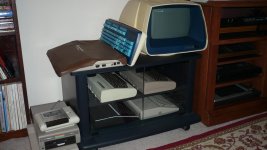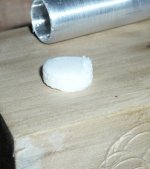cosam
Veteran Member
Unless you can dig up some documentation or happen to find someone who know's these things well, it's difficult to help you fix this without seeing it.
That said, it would appear the problem is either the keyboard itself or the interface for this on the main board. If you're not able to test any of the parts, you're pretty much limited to visually checking components along these lines.
Maybe you should enlist the help of a professional technician? I know a few hang out here, but I'm not sure if there are any near you. What you'd need is somewhere that can do proper fault diagnosis and repair, as opposed to the board-swapping shops that are commonplace these days.
That said, it would appear the problem is either the keyboard itself or the interface for this on the main board. If you're not able to test any of the parts, you're pretty much limited to visually checking components along these lines.
Maybe you should enlist the help of a professional technician? I know a few hang out here, but I'm not sure if there are any near you. What you'd need is somewhere that can do proper fault diagnosis and repair, as opposed to the board-swapping shops that are commonplace these days.


